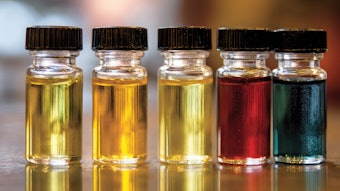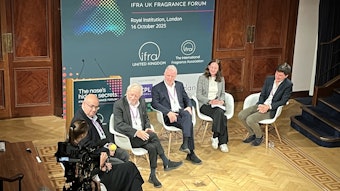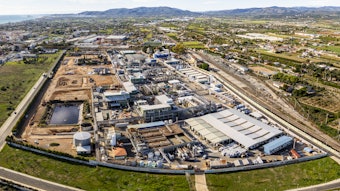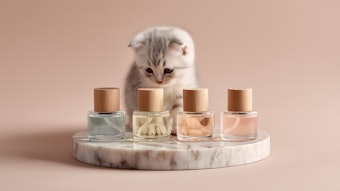The Rosewood Dilemma and Possible Solution
Rosewood oil production is not currently sustainable.** The rosewood tree is endangered, and production of its oil requires the tree's destruction. Rosewood oil production, primarily consumed by fragrance houses, is 38 tons per year, with gross sales of $2.8 million. This translates to the loss of 4,000 rosewood trees a year. This clearly cannot continue indefinitely.
To overcome the rosewood oil issue, my colleagues and I started a project in 2001 involving Amazonian institutions. The pilot-scale studies have shown that rosewood leaf oil can be extracted from young leaves of rosewood trees, giving quite good yields and a similar chemical composition to that from the wood oil. The distillation of young rosewood leaves led to a fragrant essential oil showing minor differences compared to the wood oil. (For a comparison of compositions, see T-5.) GC/MS chromatography revealed the similarities of the leaf and wood oils.*** The optical rotation was strongly dextrorotary as required by perfumery. Chiral GC/MS analysis of rosewood leaf oil showed 90% dextro (+) and only 20% laevo.
Because there has not been any systematic production of rosewood leaf oil, UNICAMP, in cooperation with the Brazilian Ministry of Development of Industry and Commerce, and various Amazonian enterprises, has undertaken a production project. The plantation consists of 10,000 rosewood seedlings intercropped to other aromatic species in an area of 30 ha. The program is expected to become economically sustainable by its fifth year. Production is estimated to yield 1,000 L of rosewood leaf oil, with sales of US$50,000. In addition, rosewood clones are in progress.
Rosewood leaf oil has a sweet, floral rose/petitgrainlike scent experienced by a large number of perfumers. I believe rosewood leaf oil will eventually replace the wood oil in fragrance creation, while at the same time reducing the devastation in the Amazon. Not only is this a benefit to the environment and the industry, this aspect of sustainability will prove very attractive to the growing legions of naturals consumers worldwide.
Acknowledgments
The author thanks: MSc. student Rita Souza; M. Paget (senior perfumer, Mane do Brasil) for sensorial analysis; T. Fazzi and M. Cassagrande (perfumers, Quest International) for sensorial analysis; Pro-Clone for rosewood clone studies; R. Quadros and M. Presser for market studies, 2006; and BASA, MDIC, PIPE-FAPESP, and CNPq for financial support and fellowships.
Address correspondence to Lauro E.S. Barata; [email protected].
*Adapted from a presentation at Centifolia—6th International Congress on Perfumery and Natural Raw Materials, Grasse, France.
**L.E.S. Barata and P. May, Rosewood exploitation in the Brazilian Amazon: options for sustainable production. Economic Botany, 58(2), 257–265 (2004).
***B.D. Zellner, M. Lo Presti, L.E.S. Barata, P. Dugo, G. Dugo and L. Mondello, Enantioselective odour analysis of linalool present in Brazilian rosewood (Aniba rosaeodora Ducke) essential oils extracted from wood and leaves through enantioselective-gas-chromatography-olfactomerry, enantioselective-gas-chromatography and gas-chromatography-mass spectrometry. Analytical Chemistry, 78, 883–890 (2006).










